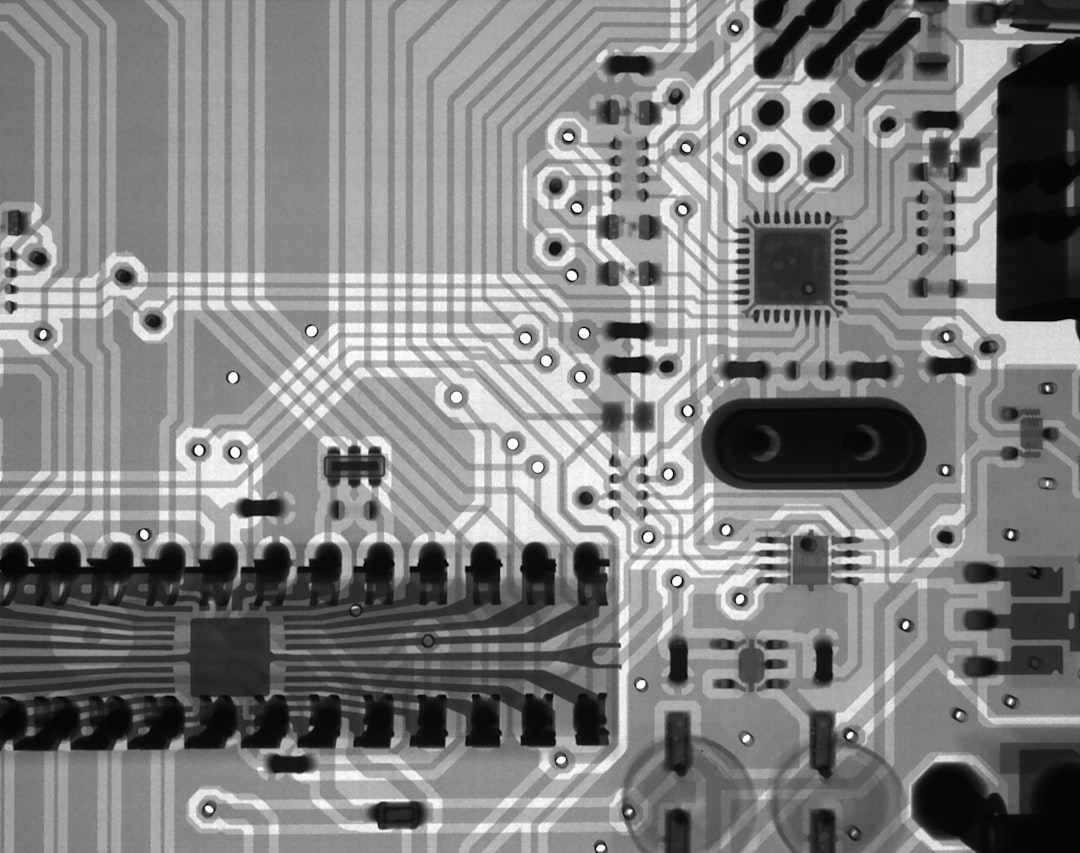Unlock encrypted content
Please enter your SSCE key to initiate on-the-fly decryption.
Decryption key: (Click cancel if you don't have the key)
Copied link to clipboard.
This feature is unavailable for free accounts. Upgrade now and enjoy all Premium benefits.
Go Premium!
This feature is unavailable for free accounts. Upgrade now and enjoy all Premium benefits.
Go Premium!
Please open this page in browser ( Google Chrome or Safari ) to use this feature.
Open In Browser
Effortless File Organization and Synchronization in the Era of Smart Contracts, Cyborgs, and Androids
Random related video for this blog.
Copied share link to clipboard.
With the rapid advancement of technology, including the rise of smart contracts, the integration of cyborgs and androids, and the development of brain-computer interfaces, the need for seamless file management solutions is more pressing than ever. In this article, we will explore the intersection of these technologies and how they can revolutionize the way we handle our digital files.
Smart Contracts: Streamlining File Management
Smart contracts, powered by blockchain technology, are self-executing contracts with the terms of the agreement directly written into code. They enable secure and transparent transactions, eliminating the need for intermediaries and reducing the risk of fraud. While primarily associated with financial transactions, smart contracts can also be utilized for file management purposes. Imagine a scenario where you need to share sensitive files with a colleague. By utilizing a smart contract, you can establish predefined conditions that must be met before granting access to the files. For example, you could require the recipient to provide a specific password or verify their identity through biometric authentication. Once the conditions are met, the smart contract automatically grants access, ensuring secure and efficient file sharing.Cyborgs and Androids: Enhancing File Accessibility
The integration of cyborgs and androids into our daily lives has the potential to revolutionize how we interact with digital files. Cyborgs, individuals with enhanced physical or mental capabilities through the integration of technology, can utilize brain-computer interfaces (BCIs) to directly access and manipulate files with their thoughts. For instance, a cyborg with a BCI implant could effortlessly navigate through their files, organize them into folders, and even perform complex operations such as merging or splitting documents. This seamless integration between human and machine not only enhances productivity but also opens up new possibilities for individuals with disabilities, providing them with equal access to digital files. Similarly, androids, humanoidrobots with advanced artificial intelligence, can be programmed to handle file management tasks autonomously. An android equipped with sophisticated algorithms and machine learning capabilities can efficiently categorize and organize files based on predefined criteria. This eliminates the need for manual intervention, saving time and improving overall file organization.
Internet of Things (IoT): Streamlining Data Migration
The Internet of Things (IoT) refers to the network of interconnected devices that can communicate and share data with each other. In the context of file management, IoT can streamline the process of data migration, ensuring seamless transfer of files between devices and platforms. Consider a scenario where you capture a video on your smartphone and want to transfer it to your computer for editing. With IoT-enabled devices, such as drones or smart cameras, the video can be automatically uploaded to the cloud or directly transferred to your computer via a secure connection. This eliminates the need for manual file transfers, reducing the risk of data loss or corruption. Furthermore, IoT devices can also facilitate file synchronization across multiple platforms. For example, you could take a photo on your smartphone and have it instantly synchronized with your tablet or computer, ensuring that you have access to the file from any device. This level of seamless integration simplifies file management and enhances productivity.Data Encryption and Cloud Computing: Ensuring File Security
With the proliferation of digital files, ensuring their security and privacy has become a paramount concern. Data breaches and unauthorized access can have severe consequences, ranging from identity theft to financial loss. This is where data encryption and cloud computing services play a crucial role. Files encrypted at data centers provide an added layer of security. When files are stored in the cloud, they are encrypted using advanced encryption algorithms, rendering them unreadable without the proper decryption key. This ensures that even if the data is compromised, it remains protected from unauthorized access. Cloud computing services, such as FileLu, offer secure and scalable file storage solutions. With FileLu's premium plans, users can store their files ranging from 256 GB to a staggering 500 TB, ensuring ample space for all their digital assets. Additionally, FileLu's large file transfer capabilities allow users to send files up to 250 GB in size, making it ideal for professionals working with large media files. Conclusion: Effortless file organization and synchronization are critical in the digital era, where the volume and complexity of files continue to grow. The integration of smart contracts, cyborgs, and androids, along with advancements in brain-computer interfaces, IoT, data encryption, and cloud computing, offers innovative solutions to streamline file management. By leveraging these technologies, individuals and organizations can enhance productivity, ensure file security, and simplify the way we handle our digital assets.Frequently Asked Questions (FAQs) Question: How can smart contracts improve file sharing?
Answer:
Smart contracts can improve file sharing by establishing predefined conditions that must be met before granting access to files. This ensures secure and efficient sharing, eliminating the risk of unauthorized access or data breaches. Question: How do cyborgs and androids enhance file accessibility?
Answer:
Cyborgs with brain-computer interfaces can directly access and manipulate files using their thoughts, providing a seamless and intuitive experience. Androids, on the other hand, can autonomously handle file management tasks, saving time and improving overall organization. Question: What role does IoT play in file management?
Answer:
IoT streamlines data migration and file synchronization by enabling seamless transfer of files between devices and platforms. It eliminates the need for manual file transfers and ensures that files are accessible from any device. Question: How does data encryption and cloud computing ensure file security?
Answer:
Data encryption ensures that files remain protected even if the data is compromised. Cloud computing services, such as FileLu, offer secure file storage solutions with advanced encryption algorithms, providing a safe and scalable environment for storing digital assets.
By Amelia Isabella file transfer, ftp backup, upload video, auto camera upload, cloud storage, online backup, encryption file sharing, large files transfer, upload files, share file, photo upload, video sharing site, free file upload
Email: [email protected]
Related
The Future of File Management: Real-Time Collaboration and Biometric Authentication.
May 31, 2023
Read More
Popular
The Future of Digital Transformation: Exploring Smart Homes, Efficient File...
November 30, 2025
Read More
Latest
The Future of Digital Transformation: Exploring Smart Homes, Efficient File...
November 30, 2025
Read More
Exploring the Benefits of Cloud Storage and Innovative Technologies in...
November 26, 2025
Read More
The Future of Technology: Exploring Biohacking, Space Tourism, and Digital...
November 23, 2025
Read More
The Future of File Sharing: Streamlined Workflows for Photographers and...
November 19, 2025
Read More
Exploring the Intersection of Technology: From Cybersecurity to Augmented Reality...
November 16, 2025
Read More
The Future of File Management: Embracing Edge Computing and Efficient...
November 12, 2025
Read More
The Future of File Sharing: Exploring User-Friendly Solutions and Data...
November 5, 2025
Read More
The Future of Cloud Storage: How FileLu Empowers Creative Professionals...
November 2, 2025
Read More
The Future of Autonomous Technologies: Innovations in Robotics, File Sharing,...
October 29, 2025
Read More
Emerging Technologies Revolutionizing File Management: From Li-Fi to Robust Collaboration...
October 26, 2025
Read More
Emerging Technologies: Exploring the Impact of File Access Auditing, Genetic...
October 19, 2025
Read More
The Future of Data Storage: Exploring Advanced Encryption, Mobile Integration,...
October 5, 2025
Read More
Exploring the Future of Data Management: Security, Efficiency, and Cognitive...
September 28, 2025
Read More
Revolutionizing Data Management: Innovations in Storage, Security, and Sustainable Technology.
September 24, 2025
Read More

























